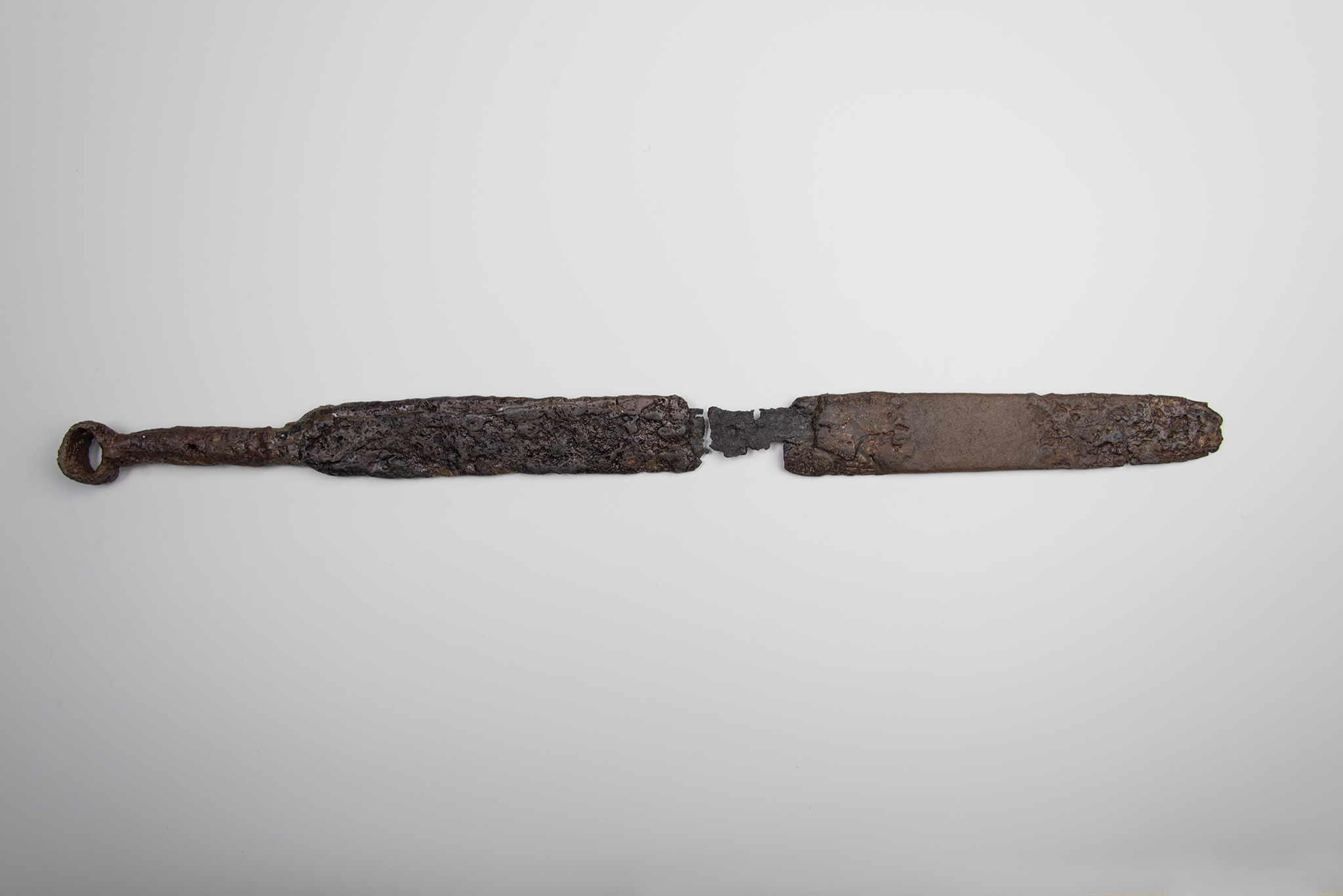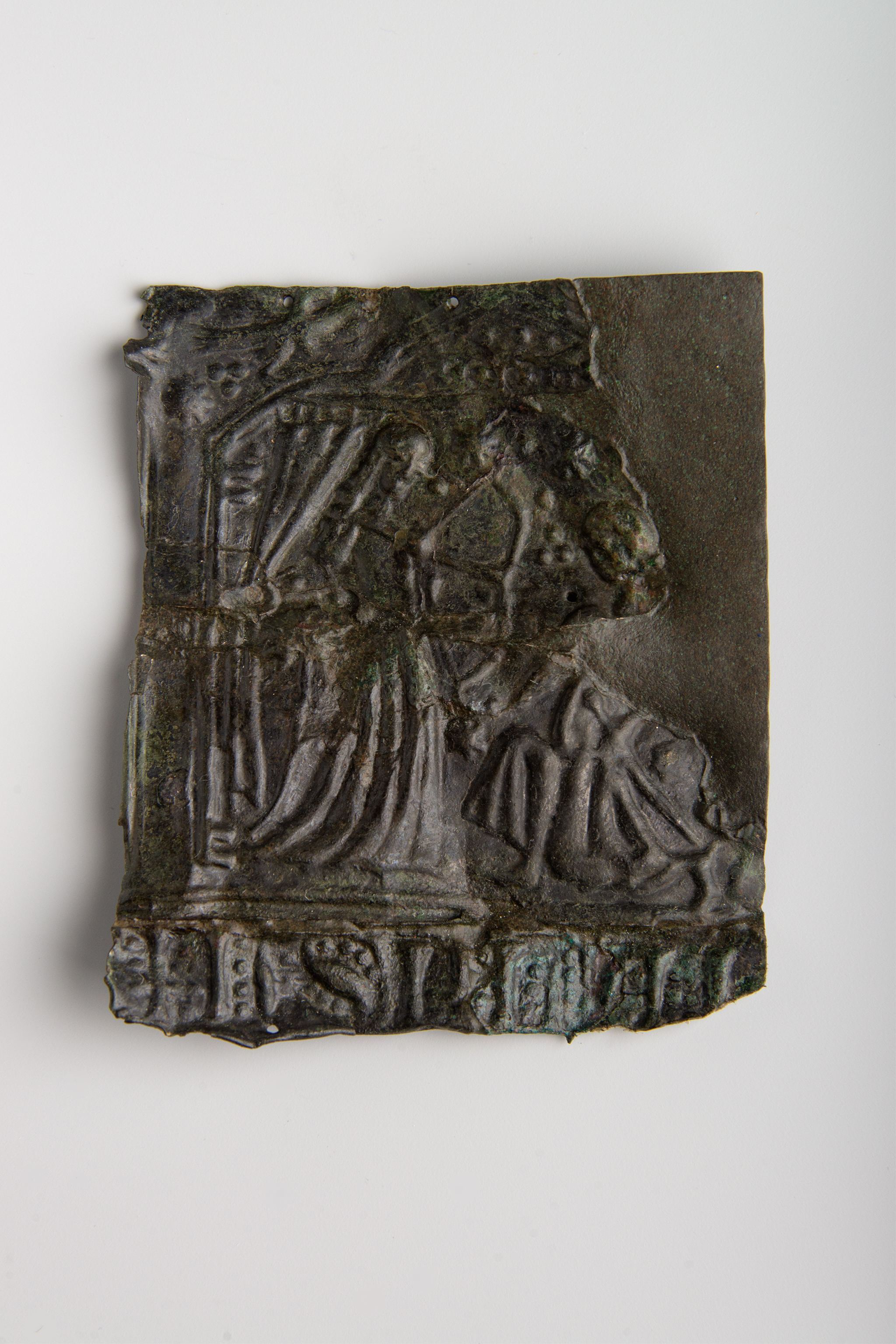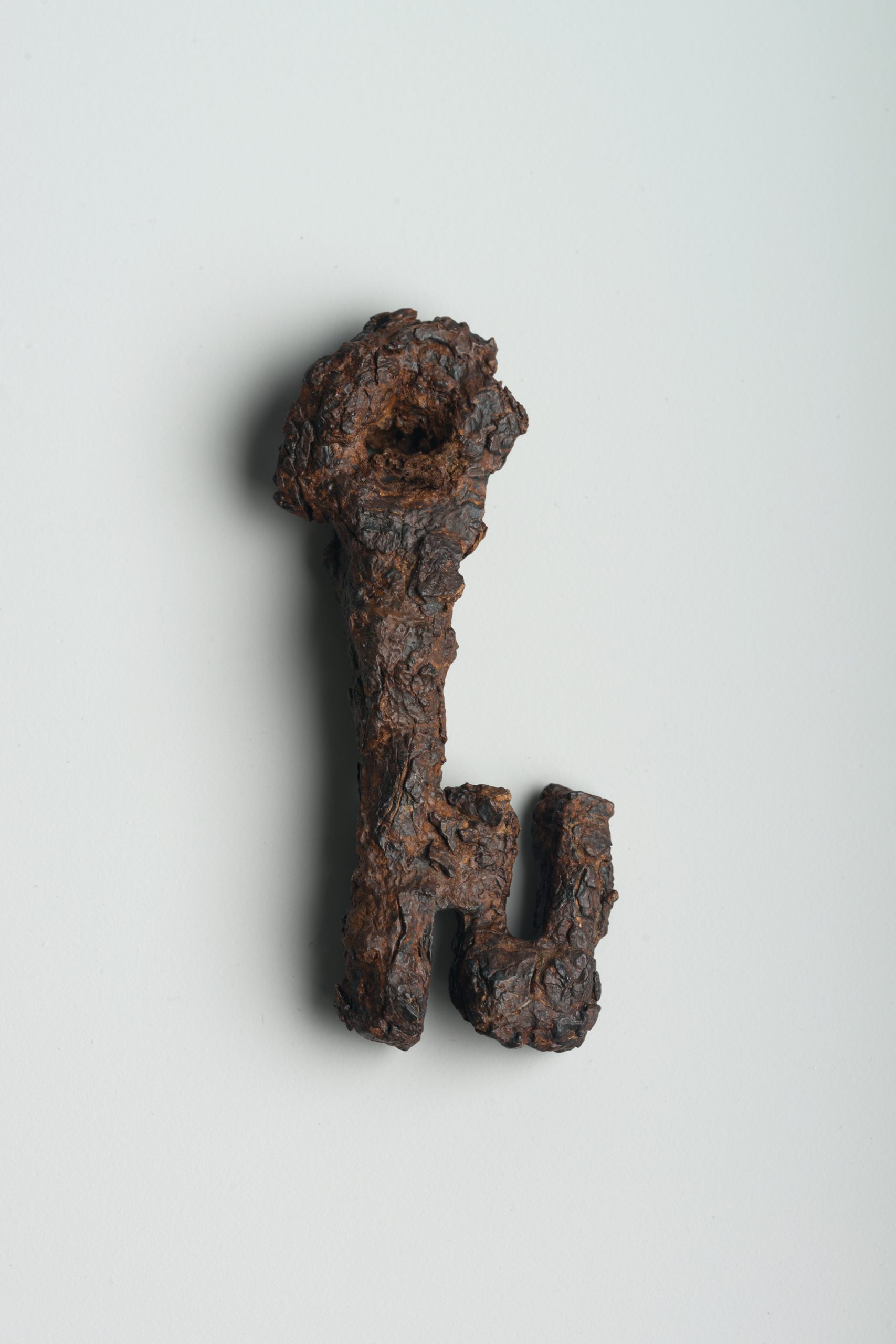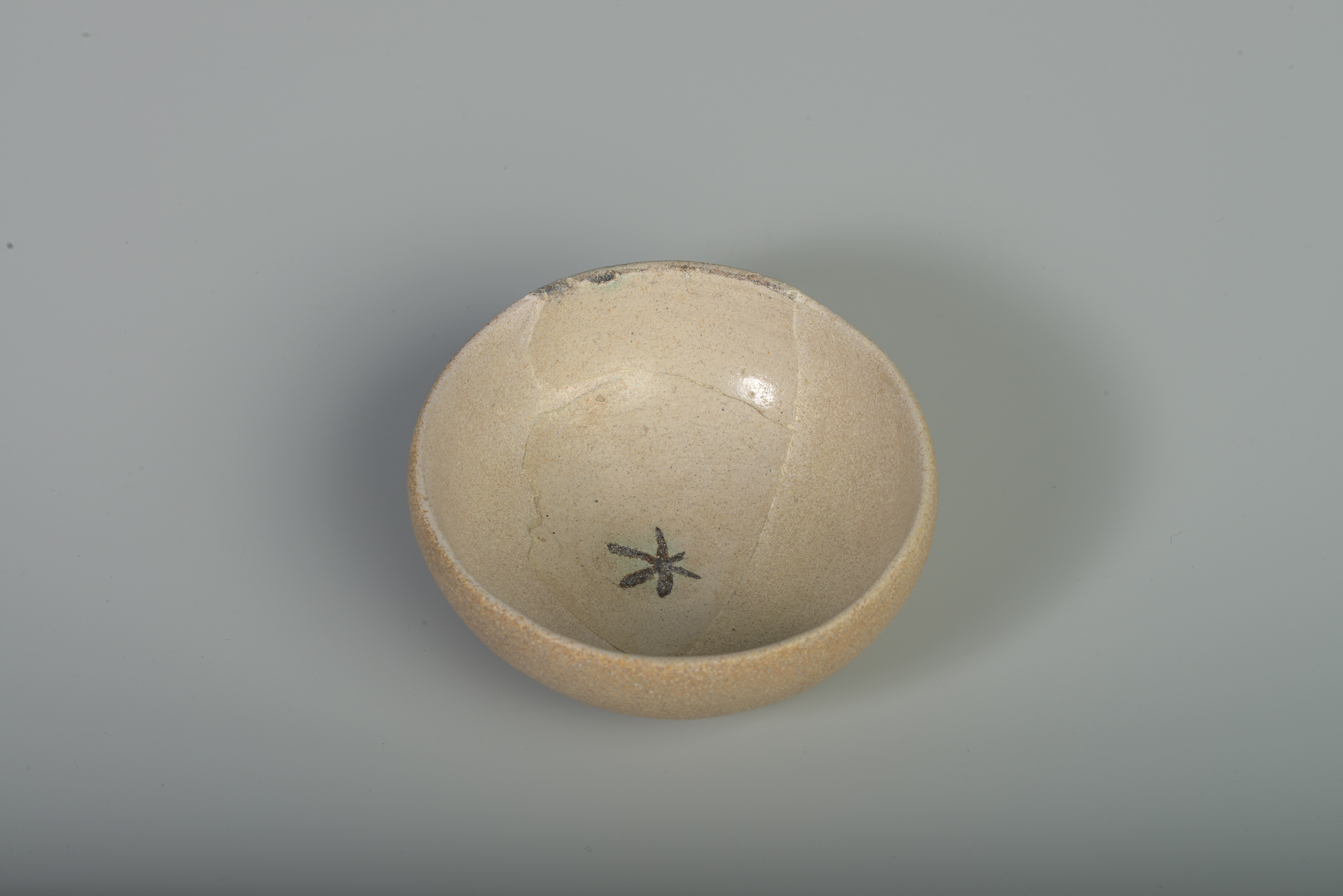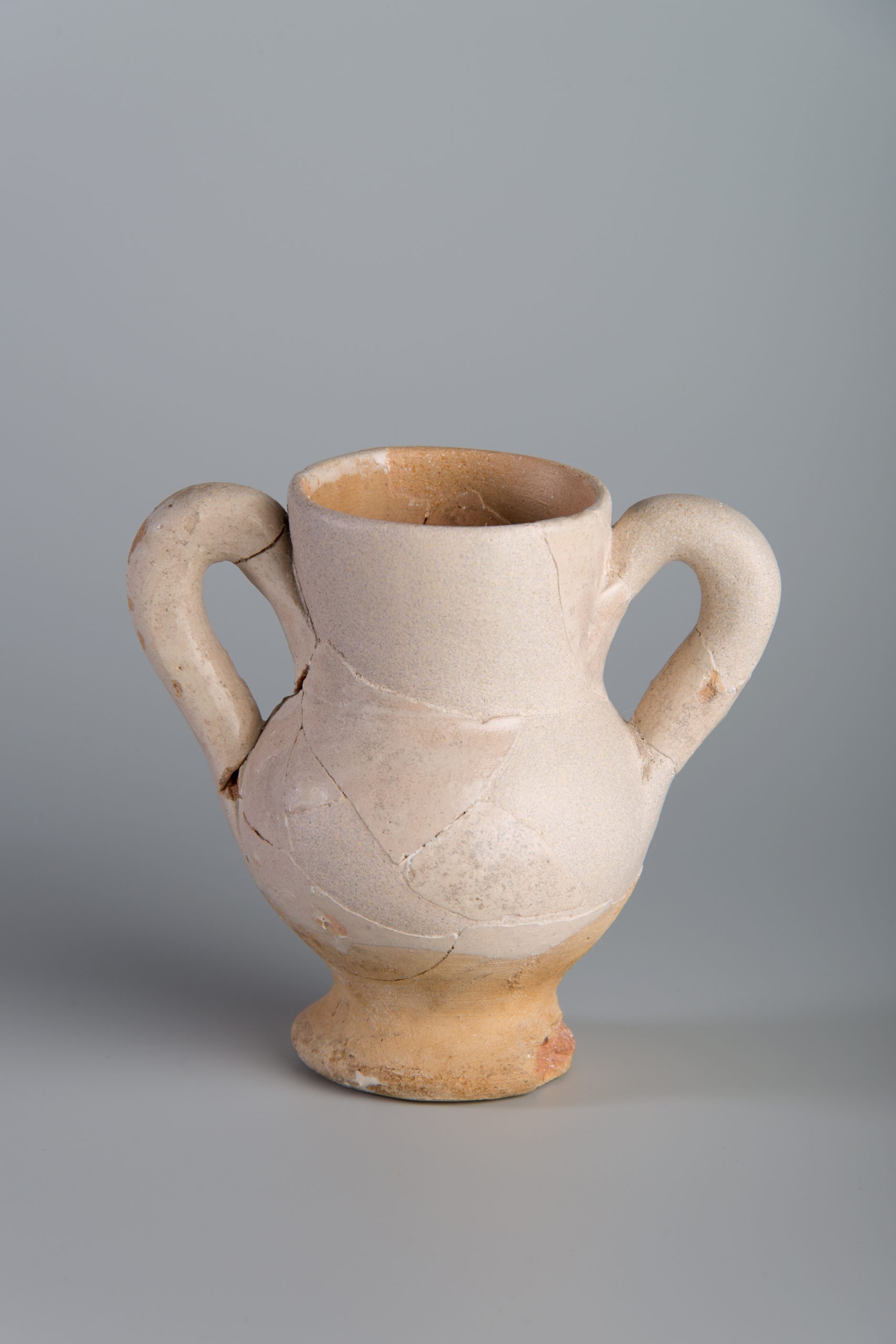- Object type
- seal stamp
- Production date
- 1300 / 1400
- Fabric
- medieval goldsmith
- Culture
- Medieval and modern
- Discovery location
- Procedència desconeguda
- Materials
- copper
- Township
- Tàrrega (Europa, Espanya, Catalunya, Lleida, Urgell)
- Technique
- casting, carving
- Where is it?
- Exposició permanent
- Dimensions
- 20 x 9 mm


